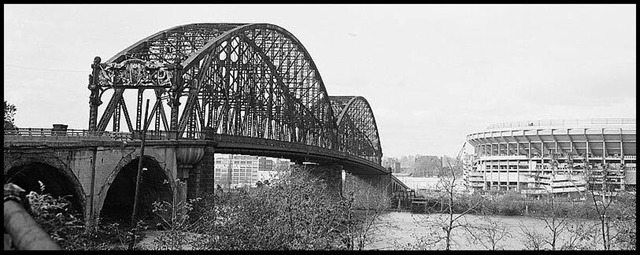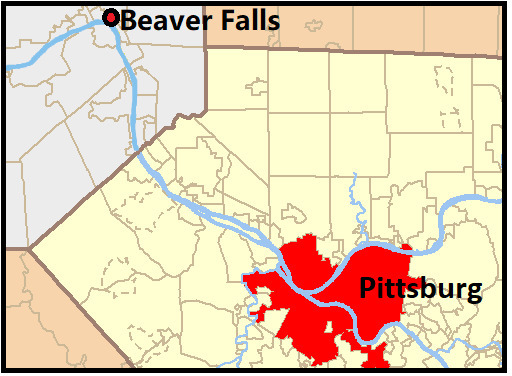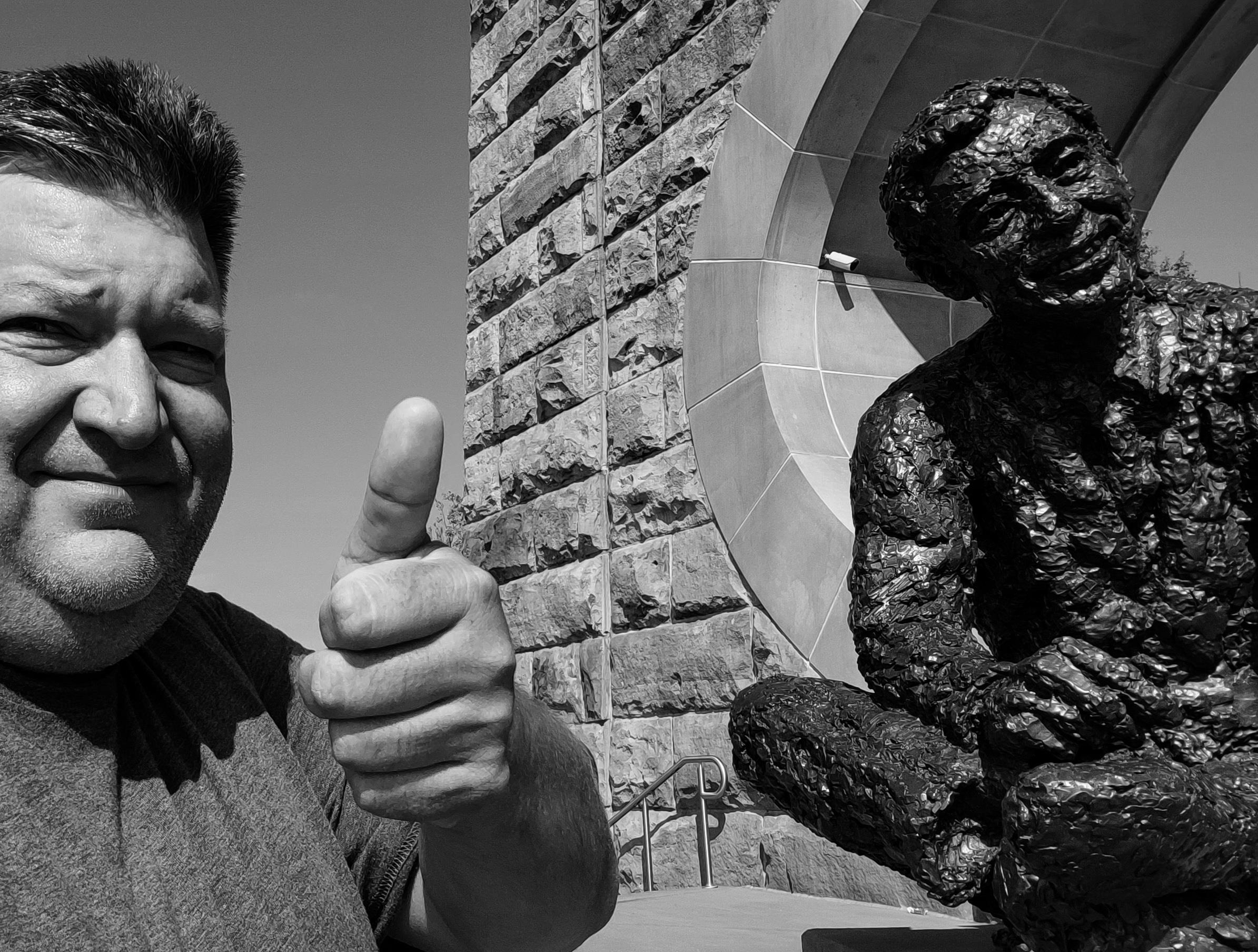This is an Earthcache – as such, there is no physical cache. Instead you will partake in a geology lesson by making observations and answering 5 questions about the Beaver Sandstone at the posted coordinates. Permission to place this earthcache was given by info@pgh-sea.com.
THE MANCHESTER BRIDGE
 Between 1915 and 1970, the Manchester Bridge stood here connecting the North Shore to the Point. It was a steel Pratt truss bridge that was held up by 6 piers. These piers were constructed of concrete and then faced with Beaver Sandstone. After the bridge was demolished, this lone blackened sandstone abutment remained on the North Shore.
Between 1915 and 1970, the Manchester Bridge stood here connecting the North Shore to the Point. It was a steel Pratt truss bridge that was held up by 6 piers. These piers were constructed of concrete and then faced with Beaver Sandstone. After the bridge was demolished, this lone blackened sandstone abutment remained on the North Shore.

In 2008 when the idea for a Fred Rogers statue was developed, this abutment was cleaned, and a keyhole shape was bored into it for the new Tribute To Children memorial.
SANDSTONE IS A SEDIMENTARY ROCK
Sedimentary rocks are formed by the consolidation of sediment particles. These particles are eroded from other rock types from higher elevations that gradually migrated towards the ocean over time. This stone was formed by Lithification, a process where the compaction of individual grains of sand that experienced immense pressure that cement together into a solid stone. Sandstone is usually comprised of particles of quartz or feldspar, clay, or calcite. Different types of sandstone can vary in hardness, but these rocks tend to be softer than other rock types such as granite.

Since sandstones are made of sand grains that have been cemented together, the texture tends to be like sandpap. These stones usually have a rough, granular texture, but to really identify a sandstone you have to peer closely at the individual sand grains that make up the surface of the stone. Since the grain diameters range from 2 mm all the way down to only 0.06 mm, you may need a good magnifying lense (or your cell phone camera) to see the sand grains that make up the sandstone.

Typically sandstone ranges in color from a brown, tan, to an off white. Pure quartz is very light in color. Feldspar has more of a dark amber color, so the more feldspar the darker the sandstone. Basically, the lighter colored the sandstone is indicates that it has a high quartz content, and the darker it is indicates a higher feldspar content.

Other colors that appear are indications of different minerals within the sandstone. For example brown, red, and orange would indicate the presence of iron. Visible purple in the stone would indicate the presence of manganese.
BEAVER SANDSTONE
The Homewood Sandstone used for this bridge abutment formed over 320 million years ago during the Pennsylvanian age. Beaver County lies in the Pennsylvanian Pottsville Formation, which is a mapped bedrock unit in Pennsylvania, West Virginia, Maryland, Ohio, and Alabama that forms the Ridge-and-Valley Appalachians of the eastern United States.

This particular “Beaver Sandstone” probably came from the Homewood Stone Quarry 30 miles north of here in Beaver County. The sandstone beds there range from 20-60 feet thick, so blocks of any desired size could be quarried. Blocks as large as 2 feet thick, 3 feet wide, and 6 feet long have been obtained from the Homewood Quarry for use in constructing piers, abutments, retaining walls, curbs, and foundation blocks. The extraction of quarry stone and coal in Beaver County was stimulated by the construction of the railroad in 1852. Many quarries were established in close proximity to the rail system where the heavy stones would be transported with ease.
LOGGING REQUIREMENTS:To log this Earthcache: Read the geology lesson above. Answer all five questions posted below. Answers can be sent via e-mail or messenger contacts on my Geocaching profile. Group answers are acceptable, just list all members of your group with your answers. Do not post the answers to the questions in your logs.
QUESTION 1. What is the process called when sediment layers are turned to rock? (The "L" word from the reading)
QUESTION 2. Rub your hand gently on the stone (Please do not scratch!). Do the grains of sandstone feel tightly cemented on or do they rub off easy?
QUESTION 3. Using the PRIMARY SAND PARTICAL SIZES chart in the write-up, how would you classify the size these sand particles?
QUESTION 4. Does the majority of these stones have a lighter high quartz look to them, or a darker feldspar appearance to them?
QUESTION 5. What indications do you see that iron is present in these stone blocks?
OPTIONAL PHOTO: Posting a photo that readily indicates that you (and anyone else logging the find) are at the location.
 Awesnap has earned GSA's highest level:
Awesnap has earned GSA's highest level:

REFERENCES:
1. Called Homewood or Racine, It's the Home of Buttermilk Falls, R.Admas, M.Swift. S.Kite, D.Brezinski, Milestones Vol 18 No 2 Summer 1993, bcpahistory.org
2. What Are the Three Most Common Cementing Agents for Sandstones?, Carpenter, Michael E., April 24, 2017, sciencing.org